My
List |
Addition Date
|
Target
|
Mission
|
Instrument
|
Size
|

|
2024-02-14 |
|
NICER
NuSTAR
|
|
4800x2700x3 |
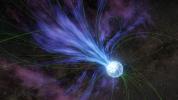
|
-
PIA26274:
-
A Magnetar Loses Mass (Artist's Concept)
Full Resolution:
TIFF
(31.16 MB)
JPEG
(1.022 MB)
|

|
2023-04-06 |
|
NuSTAR
|
|
3840x2160x3 |
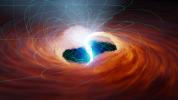
|
-
PIA25781:
-
Magnetic Fields Around an Ultraluminous X-ray Source (Illustration)
Full Resolution:
TIFF
(21.83 MB)
JPEG
(592.9 kB)
|

|
2023-02-09 |
Sol (our sun)
|
NuSTAR
|
|
2000x2000x3 |
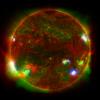
|
-
PIA25628:
-
Three-Telescope View of the Sun
Full Resolution:
TIFF
(8.903 MB)
JPEG
(217.5 kB)
|

|
2022-12-20 |
|
NuSTAR
|
|
3840x2160x3 |
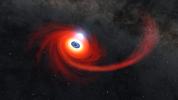
|
-
PIA25440:
-
A Black Hole Destroys a Star (Illustration)
Full Resolution:
TIFF
(13.8 MB)
JPEG
(505.4 kB)
|

|
2022-02-10 |
Jupiter
|
NuSTAR
|
|
3840x2160x3 |
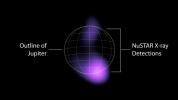
|
-
PIA25131:
-
High-Energy X-rays Detected From Jupiter's Auroras
Full Resolution:
TIFF
(2.535 MB)
JPEG
(222.9 kB)
|

|
2021-07-09 |
|
NuSTAR
|
|
4000x1459x3 |
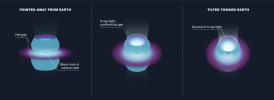
|
-
PIA24574:
-
The Changing X-ray Brightness of SS 433 (Illustration)
Full Resolution:
TIFF
(2.821 MB)
JPEG
(198 kB)
|

|
2020-07-16 |
|
NuSTAR
|
|
5740x3228x3 |
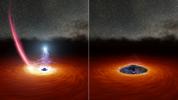
|
-
PIA23864:
-
Black Hole Corona's Disappearing Act (Illustration)
Full Resolution:
TIFF
(30.01 MB)
JPEG
(1.235 MB)
|

|
2020-06-24 |
|
NuSTAR
|
|
3334x1875x3 |
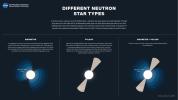
|
-
PIA23863:
-
Different Types of Neutron Stars (Illustration)
Full Resolution:
TIFF
(2.907 MB)
JPEG
(342.5 kB)
|

|
2019-09-04 |
|
NuSTAR
|
NuSTAR
|
3488x3485x3 |
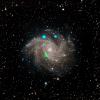
|
-
PIA23401:
-
NASA Telescope Spots Mystery in Fireworks Galaxy
Full Resolution:
TIFF
(18.8 MB)
JPEG
(820.4 kB)
|

|
2019-02-20 |
|
NuSTAR
|
NuSTAR
|
2500x2500x3 |
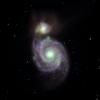
|
-
PIA23005:
-
A Hard X-ray Look at M51
Full Resolution:
TIFF
(9.984 MB)
JPEG
(228.8 kB)
|

|
2017-11-02 |
|
NuSTAR
|
|
5120x2880x3 |
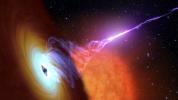
|
-
PIA22085:
-
Black Hole With Jet (Artist's Concept)
Full Resolution:
TIFF
(34.34 MB)
JPEG
(1.257 MB)
|

|
2017-03-23 |
|
Galaxy Evolution Explorer (GALEX)
NuSTAR
|
GALEX Telescope
NuSTAR
|
2048x1152x3 |
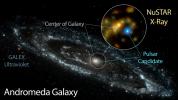
|
-
PIA20970:
-
Pulsar Candidate in Andromeda
Full Resolution:
TIFF
(3.973 MB)
JPEG
(291.9 kB)
|

|
2017-01-31 |
|
NuSTAR
SWIFT
XMM-Newton
|
|
6875x5479x3 |
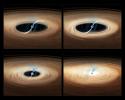
|
-
PIA21418:
-
The Rapid Burster
Full Resolution:
TIFF
(48.77 MB)
JPEG
(1.679 MB)
|

|
2017-01-07 |
IC 3639
|
NuSTAR
|
Hubble Space Telescope
ESO
|
1300x1300x3 |
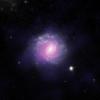
|
-
PIA21087:
-
Galaxy IC 3639 with Obscured Active Galactic Nucleus
Full Resolution:
TIFF
(3.008 MB)
JPEG
(60.63 kB)
|

|
2017-01-07 |
NGC 1448
|
Chandra X-ray Observatory
NuSTAR
|
|
1750x1750x3 |
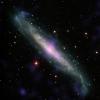
|
-
PIA21086:
-
Galaxy NGC 1448 with Active Galactic Nucleus
Full Resolution:
TIFF
(7.376 MB)
JPEG
(397.9 kB)
|

|
2016-07-28 |
|
Chandra X-ray Observatory
NuSTAR
|
|
2500x2500x3 |
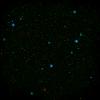
|
-
PIA20865:
-
A Black Hole 'Choir'
Full Resolution:
TIFF
(5.029 MB)
JPEG
(375.3 kB)
|

|
2016-07-12 |
|
NuSTAR
|
|
3951x2222x3 |
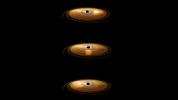
|
-
PIA20697:
-
Black Hole with 'Wobbling' Disk (Artist Concept)
Full Resolution:
TIFF
(2.883 MB)
JPEG
(220.6 kB)
|

|
2016-01-05 |
|
Galaxy Evolution Explorer (GALEX)
NuSTAR
|
GALEX Telescope
NuSTAR
|
6289x3538x3 |
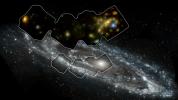
|
-
PIA20061:
-
Andromeda in High-Energy X-rays
Full Resolution:
TIFF
(41.67 MB)
JPEG
(2.214 MB)
|

|
2015-12-17 |
|
Hubble Space Telescope
NuSTAR
|
|
2948x2321x3 |
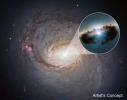
|
-
PIA20058:
-
Hidden Lair at the Heart of Galaxy NGC 1068
Full Resolution:
TIFF
(20.54 MB)
JPEG
(870.1 kB)
|

|
2015-12-17 |
|
Hubble Space Telescope
NuSTAR
|
|
2888x2880x3 |
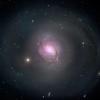
|
-
PIA20057:
-
NuSTAR's View of Galaxy NGC 1068
Full Resolution:
TIFF
(18.53 MB)
JPEG
(305.8 kB)
|

|
2015-10-27 |
|
NuSTAR
|
|
4800x2700x3 |
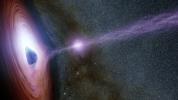
|
-
PIA20051:
-
Shifting Coronas Around Black Holes (Artist Concept)
Full Resolution:
TIFF
(38.9 MB)
JPEG
(2.244 MB)
|

|
2015-07-08 |
Sol (our sun)
|
NuSTAR
|
NuSTAR
SDO
|
4096x4096x3 |
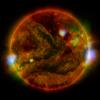
|
-
PIA19821:
-
NuSTAR Stares at the Sun
Full Resolution:
TIFF
(50.35 MB)
JPEG
(797.3 kB)
|

|
2015-07-06 |
|
NuSTAR
|
|
1504x1611x3 |

|
-
PIA19348:
-
NuSTAR Seeks Hidden Black Holes
Full Resolution:
TIFF
(7.272 MB)
JPEG
(204.9 kB)
|

|
2015-05-07 |
|
NuSTAR
|
NuSTAR
|
3000x1679x3 |
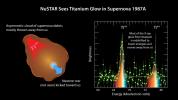
|
-
PIA19335:
-
Tracing Titanium's Escape
Full Resolution:
TIFF
(15.12 MB)
JPEG
(299.3 kB)
|

|
2015-04-29 |
|
NuSTAR
|
NuSTAR
|
2800x1575x3 |
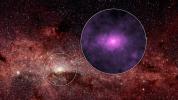
|
-
PIA19334:
-
Extra X-rays at the Hub of Our Milky Way Galaxy
Full Resolution:
TIFF
(13.24 MB)
JPEG
(864.6 kB)
|

|
2015-02-19 |
|
NuSTAR
XMM-Newton
|
|
4267x2400x3 |
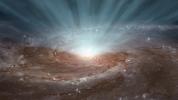
|
-
PIA18919:
-
How Black Hole Winds Blow (Artist's Concept)
Full Resolution:
TIFF
(30.74 MB)
JPEG
(1.644 MB)
|

|
2015-02-19 |
|
NuSTAR
XMM-Newton
|
|
3000x2400x3 |
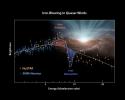
|
-
PIA18918:
-
The Answer is Blowing in the Black Hole Wind
Full Resolution:
TIFF
(21.61 MB)
JPEG
(407.3 kB)
|

|
2015-01-08 |
|
Hubble Space Telescope
NuSTAR
|
|
9000x3000x3 |
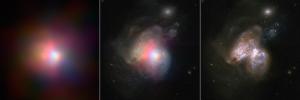
|
-
PIA18907:
-
Tale of Two Black Holes
Full Resolution:
TIFF
(81.02 MB)
JPEG
(3.67 MB)
|

|
2014-12-22 |
Sol (our sun)
|
NuSTAR
|
NuSTAR
SDO
|
3150x1600x3 |
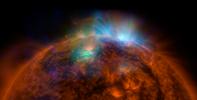
|
-
PIA18906:
-
Sun Shines in High-Energy X-rays
Full Resolution:
TIFF
(15.13 MB)
JPEG
(282 kB)
|

|
2014-10-08 |
|
NuSTAR
|
|
3000x1688x3 |
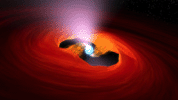
|
-
PIA18845:
-
Beacons of X-ray Light (Animation)

Full Resolution:
TIFF
(15.2 MB)
JPEG
(147.8 kB)
|

|
2014-10-08 |
|
NuSTAR
|
|
1200x1200x3 |
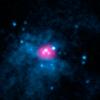
|
-
PIA18844:
-
Ultraluminous X-ray Sources in M82 Galaxy
Full Resolution:
TIFF
(4.322 MB)
JPEG
(60.5 kB)
|

|
2014-10-08 |
|
NuSTAR
|
|
600x600x3 |
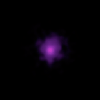
|
-
PIA18843:
-
NuSTAR Captures the Beat of a Dead Star (Animation)

Full Resolution:
TIFF
(362.1 kB)
JPEG
(7.725 kB)
|

|
2014-10-08 |
|
NuSTAR
|
|
4000x2250x3 |
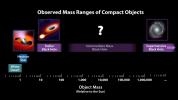
|
-
PIA18842:
-
Mass Chart for Dead Stars and Black Holes
Full Resolution:
TIFF
(27.01 MB)
JPEG
(345.1 kB)
|

|
2014-10-08 |
|
NuSTAR
|
|
1900x1600x3 |
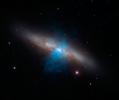
|
-
PIA18841:
-
NuSTAR Finds a Pulse in Cigar Galaxy
Full Resolution:
TIFF
(9.123 MB)
JPEG
(97.7 kB)
|

|
2014-10-08 |
|
NuSTAR
|
Chandra X-ray Telescope
Hubble Space Telescope
|
1200x675x3 |
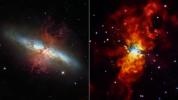
|
-
PIA18840:
-
Galaxy in Different Lights
Full Resolution:
TIFF
(2.431 MB)
JPEG
(58.14 kB)
|

|
2014-09-16 |
|
Chandra X-ray Observatory
NuSTAR
|
|
1400x1400x3 |
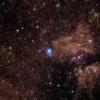
|
-
PIA18836:
-
Powerful, Pulsating Core of Star
Full Resolution:
TIFF
(5.882 MB)
JPEG
(319 kB)
|

|
2014-08-12 |
|
NuSTAR
|
NuSTAR
|
3300x2550x3 |
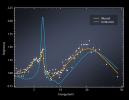
|
-
PIA18467:
-
Big, Spinning Black Hole Blurs Light
Full Resolution:
TIFF
(25.26 MB)
JPEG
(349.5 kB)
|

|
2014-02-19 |
|
Chandra X-ray Observatory
NuSTAR
|
Chandra X-ray Telescope
NuSTAR
|
3000x2400x3 |
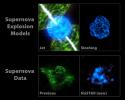
|
-
PIA17846:
-
NuSTAR Data Point to Sloshing Supernovas
Full Resolution:
TIFF
(21.61 MB)
JPEG
(378 kB)
|

|
2014-02-19 |
|
NuSTAR
|
|
586x434x3 |
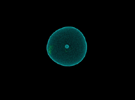
|
-
PIA17845:
-
Sloshing Star Goes Supernova

Full Resolution:
TIFF
(763.5 kB)
JPEG
(9.537 kB)
|

|
2014-02-19 |
|
Chandra X-ray Observatory
NuSTAR
|
Chandra X-ray Telescope
NuSTAR
|
3000x2000x3 |
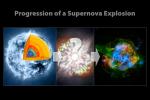
|
-
PIA17844:
-
Evolution of a Supernova
Full Resolution:
TIFF
(18.01 MB)
JPEG
(344.8 kB)
|

|
2014-02-19 |
|
Chandra X-ray Observatory
NuSTAR
|
Chandra X-ray Telescope
NuSTAR
|
2048x1024x3 |
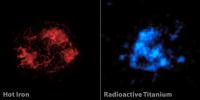
|
-
PIA17842:
-
The Case of Missing Iron in Cassiopeia A
Full Resolution:
TIFF
(6.294 MB)
JPEG
(87.83 kB)
|

|
2014-02-19 |
|
Chandra X-ray Observatory
NuSTAR
|
Chandra X-ray Telescope
NuSTAR
|
1024x1024x3 |
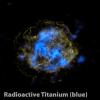
|
-
PIA17841:
-
Radioactive Core of a Dead Star
Full Resolution:
TIFF
(3.147 MB)
JPEG
(62.44 kB)
|

|
2014-02-19 |
|
NuSTAR
|
NuSTAR
|
4000x2250x3 |
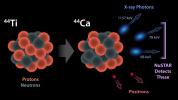
|
-
PIA17840:
-
The Creation of Titanium in Stars
Full Resolution:
TIFF
(27.01 MB)
JPEG
(330.3 kB)
|

|
2014-02-19 |
|
Chandra X-ray Observatory
NuSTAR
|
Chandra X-ray Telescope
NuSTAR
|
3072x1024x3 |
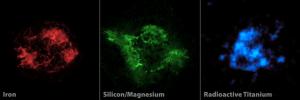
|
-
PIA17839:
-
Adding a New "Color" to Palate of Cassiopeia A Images
Full Resolution:
TIFF
(9.442 MB)
JPEG
(157.2 kB)
|

|
2014-02-19 |
|
Chandra X-ray Observatory
NuSTAR
|
Chandra X-ray Telescope
NuSTAR
|
3000x3000x3 |
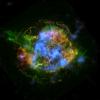
|
-
PIA17838:
-
Untangling the Remains of Cassiopeia A
Full Resolution:
TIFF
(27.01 MB)
JPEG
(350.8 kB)
|

|
2014-01-09 |
|
NuSTAR
|
NuSTAR
|
3300x2800x3 |
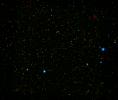
|
-
PIA17567:
-
Different Flavors of Black Holes
Full Resolution:
TIFF
(27.73 MB)
JPEG
(545.3 kB)
|

|
2014-01-09 |
|
NuSTAR
|
NuSTAR
|
2500x2500x3 |
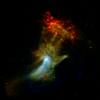
|
-
PIA17566:
-
High-Energy X-ray View of 'Hand of God'
Full Resolution:
TIFF
(18.76 MB)
JPEG
(172.9 kB)
|

|
2013-11-26 |
|
NuSTAR
|
NuSTAR
|
1400x1400x3 |
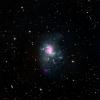
|
-
PIA17561:
-
Topsy Turvy Black Holes
Full Resolution:
TIFF
(5.882 MB)
JPEG
(137.5 kB)
|

|
2013-11-26 |
|
NuSTAR
|
NuSTAR
|
1600x1600x3 |
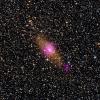
|
-
PIA17560:
-
Black Holes of the Circinus Galaxy
Full Resolution:
TIFF
(7.683 MB)
JPEG
(599.9 kB)
|

|
2013-09-05 |
|
NuSTAR
|
NuSTAR
|
3200x1800x3 |
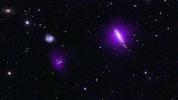
|
-
PIA17440:
-
Black Holes Shine for NuSTAR
Full Resolution:
TIFF
(17.29 MB)
JPEG
(718.2 kB)
|

|
2013-06-11 |
|
NuSTAR
|
NuSTAR
|
6620x3724x3 |
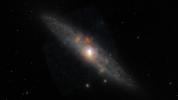
|
-
PIA17244:
-
Sculptor Galaxy Shines with X-rays
Full Resolution:
TIFF
(73.99 MB)
JPEG
(547.1 kB)
|

|
2013-02-27 |
|
NuSTAR
XMM-Newton
|
|
4266x2400x3 |
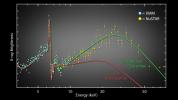
|
-
PIA16870:
-
Two X-Ray Observatories are Better Than One
Full Resolution:
TIFF
(30.73 MB)
JPEG
(419.4 kB)
|

|
2013-02-27 |
|
NuSTAR
XMM-Newton
|
|
3000x2400x3 |
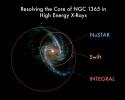
|
-
PIA16699:
-
NuSTAR's Improved View
Full Resolution:
TIFF
(21.61 MB)
JPEG
(367.5 kB)
|

|
2013-02-27 |
|
NuSTAR
XMM-Newton
|
|
3000x1731x3 |
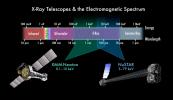
|
-
PIA16698:
-
Complementary X-Ray Vision
Full Resolution:
TIFF
(15.59 MB)
JPEG
(313.7 kB)
|

|
2013-02-27 |
|
NuSTAR
XMM-Newton
|
|
3600x2400x3 |
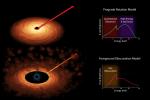
|
-
PIA16697:
-
Two Models of Black Hole Spin (Artist's Concept)
Full Resolution:
TIFF
(25.93 MB)
JPEG
(379.3 kB)
|

|
2013-02-27 |
|
NuSTAR
XMM-Newton
|
|
3600x2400x3 |
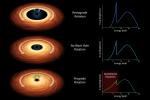
|
-
PIA16696:
-
How to Measure the Spin of a Black Hole (Artist's Concept)
Full Resolution:
TIFF
(25.93 MB)
JPEG
(347.8 kB)
|

|
2013-02-27 |
|
NuSTAR
|
|
4400x2475x3 |
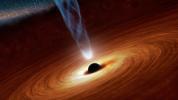
|
-
PIA16695:
-
Black Holes: Monsters in Space (Artist's Concept)
Full Resolution:
TIFF
(32.69 MB)
JPEG
(591.6 kB)
|

|
2013-01-07 |
Cassiopeia A
|
NuSTAR
|
NuSTAR
|
2200x2200x3 |
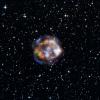
|
-
PIA16606:
-
Sizzling Remains of a Dead Star
Full Resolution:
TIFF
(14.53 MB)
JPEG
(408.9 kB)
|

|
2013-01-07 |
|
NuSTAR
|
NuSTAR
|
1700x1700x3 |
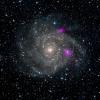
|
-
PIA16605:
-
Blazing Black Holes Spotted in Spiral Beauty
Full Resolution:
TIFF
(8.674 MB)
JPEG
(421.3 kB)
|

|
2012-10-23 |
|
NuSTAR
|
NuSTAR
Spitzer Space Telescope
|
4000x2400x3 |
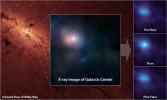
|
-
PIA16214:
-
Pointing X-ray Eyes at our Resident Supermassive Black Hole
Full Resolution:
TIFF
(28.81 MB)
JPEG
(2.077 MB)
|

|
2012-10-23 |
|
NuSTAR
|
NuSTAR
|
3202x2402x3 |
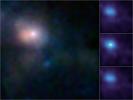
|
-
PIA16213:
-
First Look at Milky Way's Monster in High-Energy X-ray Light
Full Resolution:
TIFF
(23.08 MB)
JPEG
(206.4 kB)
|

|
2012-06-28 |
|
NuSTAR
|
NuSTAR
|
1366x1024x3 |
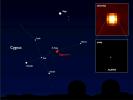
|
-
PIA15804:
-
NuSTAR's First View of High-Energy X-ray Universe
Full Resolution:
TIFF
(4.198 MB)
JPEG
(312.9 kB)
|

|
2012-06-08 |
|
NuSTAR
|
|
2048x1536x3 |

|
-
PIA15638:
-
NuSTAR on Coral Island of Kwajalein
Full Resolution:
TIFF
(9.45 MB)
JPEG
(302.8 kB)
|

|
2012-06-04 |
|
NuSTAR
|
|
3000x1993x3 |
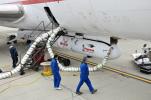
|
-
PIA15633:
-
NuSTAR Hitches a Ride on the 'Stargazer'
Full Resolution:
TIFF
(17.94 MB)
JPEG
(635.3 kB)
|

|
2012-05-30 |
|
NuSTAR
|
|
1440x1080x3 |
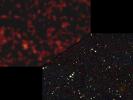
|
-
PIA15632:
-
Bringing Black Holes Into Focus
Full Resolution:
TIFF
(4.674 MB)
JPEG
(143 kB)
|

|
2012-05-30 |
|
NuSTAR
|
|
1920x1080x3 |
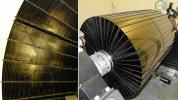
|
-
PIA15631:
-
NuSTAR's Russian Doll-like Mirrors
Full Resolution:
TIFF
(6.23 MB)
JPEG
(394.1 kB)
|

|
2012-05-22 |
|
NuSTAR
|
|
1280x720x3 |
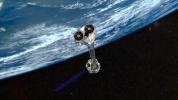
|
-
PIA15777:
-
NuSTAR Orbits Earth (Artist Concept)
Full Resolution:
TIFF
(2.768 MB)
JPEG
(121.4 kB)
|

|
2012-03-02 |
|
NuSTAR
|
|
3000x2169x3 |
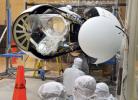
|
-
PIA15411:
-
Wrapping NuSTAR in Its Rocket Nose Cone
Full Resolution:
TIFF
(19.52 MB)
JPEG
(688.7 kB)
|

|
2012-03-02 |
|
NuSTAR
|
|
2122x3000x3 |

|
-
PIA15410:
-
Inside NuSTAR's Nose Cone
Full Resolution:
TIFF
(19.12 MB)
JPEG
(695.7 kB)
|

|
2012-02-23 |
|
NuSTAR
|
|
3000x1993x3 |
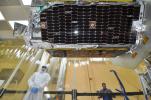
|
-
PIA15269:
-
Uniting of NuSTAR Spacecraft and Rocket
Full Resolution:
TIFF
(17.94 MB)
JPEG
(632.6 kB)
|

|
2012-02-23 |
|
NuSTAR
|
|
1993x3000x3 |

|
-
PIA15268:
-
NuSTAR Inches Toward its Rocket
Full Resolution:
TIFF
(17.96 MB)
JPEG
(453.5 kB)
|

|
2012-02-23 |
|
NuSTAR
|
|
3000x1993x3 |
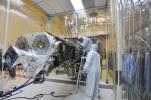
|
-
PIA15267:
-
Final Steps in Mating NuSTAR to its Rocket
Full Resolution:
TIFF
(17.94 MB)
JPEG
(694.6 kB)
|

|
2012-02-18 |
|
NuSTAR
|
|
2958x1668x3 |
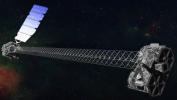
|
-
PIA15265:
-
Artist's Concept of NuSTAR
Full Resolution:
TIFF
(14.8 MB)
JPEG
(497.5 kB)
|

|
2012-01-25 |
|
NuSTAR
|
|
3344x2470x3 |
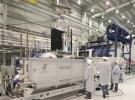
|
-
PIA15263:
-
Beginning the Journey to the Launch Pad
Full Resolution:
TIFF
(24.78 MB)
JPEG
(1.371 MB)
|

|
2012-01-18 |
|
NuSTAR
|
|
2708x4152x3 |

|
-
PIA15262:
-
Integrating NuSTAR
Full Resolution:
TIFF
(33.76 MB)
JPEG
(1.122 MB)
|

|
2012-01-18 |
|
NuSTAR
|
|
2832x4256x3 |

|
-
PIA15261:
-
NuSTAR Poses for the Camera
Full Resolution:
TIFF
(36.16 MB)
JPEG
(1.362 MB)
|

|
2007-09-24 |
|
NuSTAR
|
NuSTAR
|
1024x768x3 |
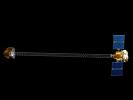
|
-
PIA10004:
-
Nuclear Spectroscopic Telescope Array (NuSTAR) (Artist concept)
Full Resolution:
TIFF
(2.363 MB)
JPEG
(30.96 kB)
|

 Planetary Data System
Planetary Data System

























































































